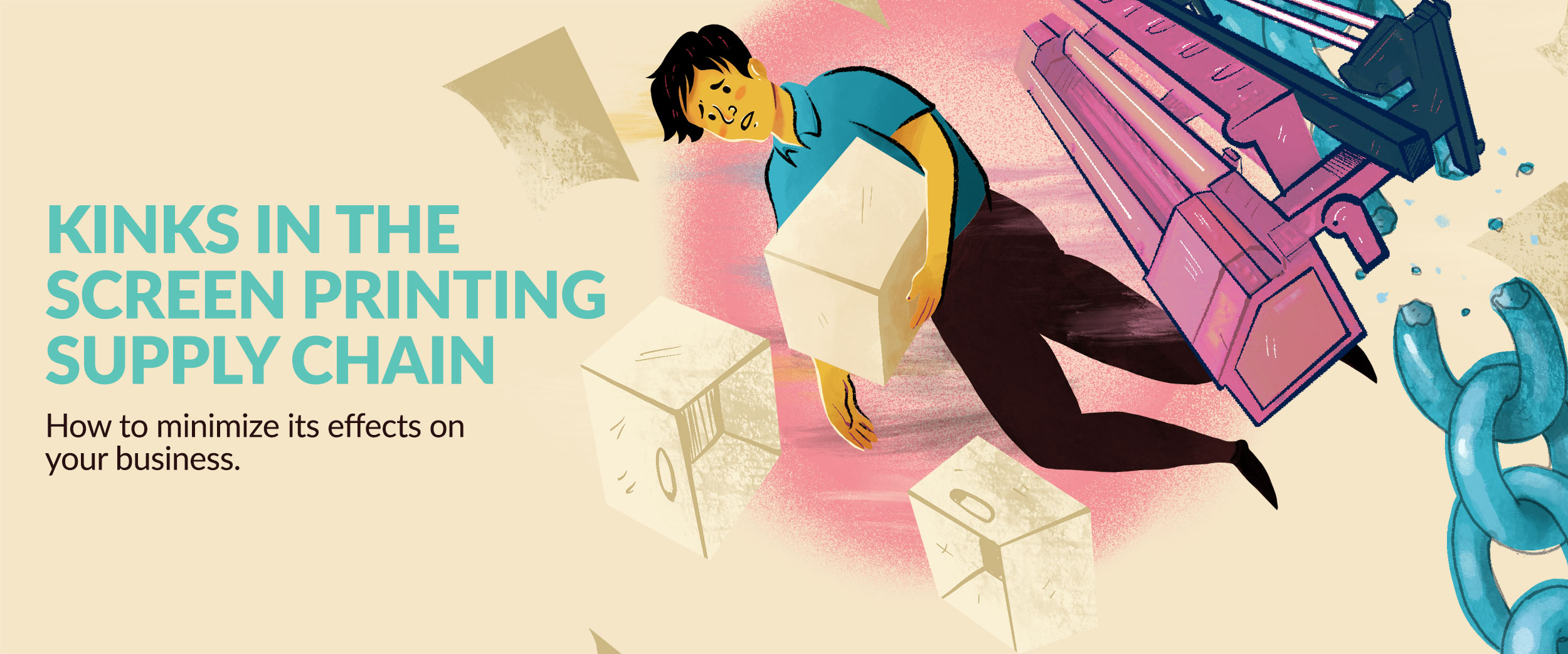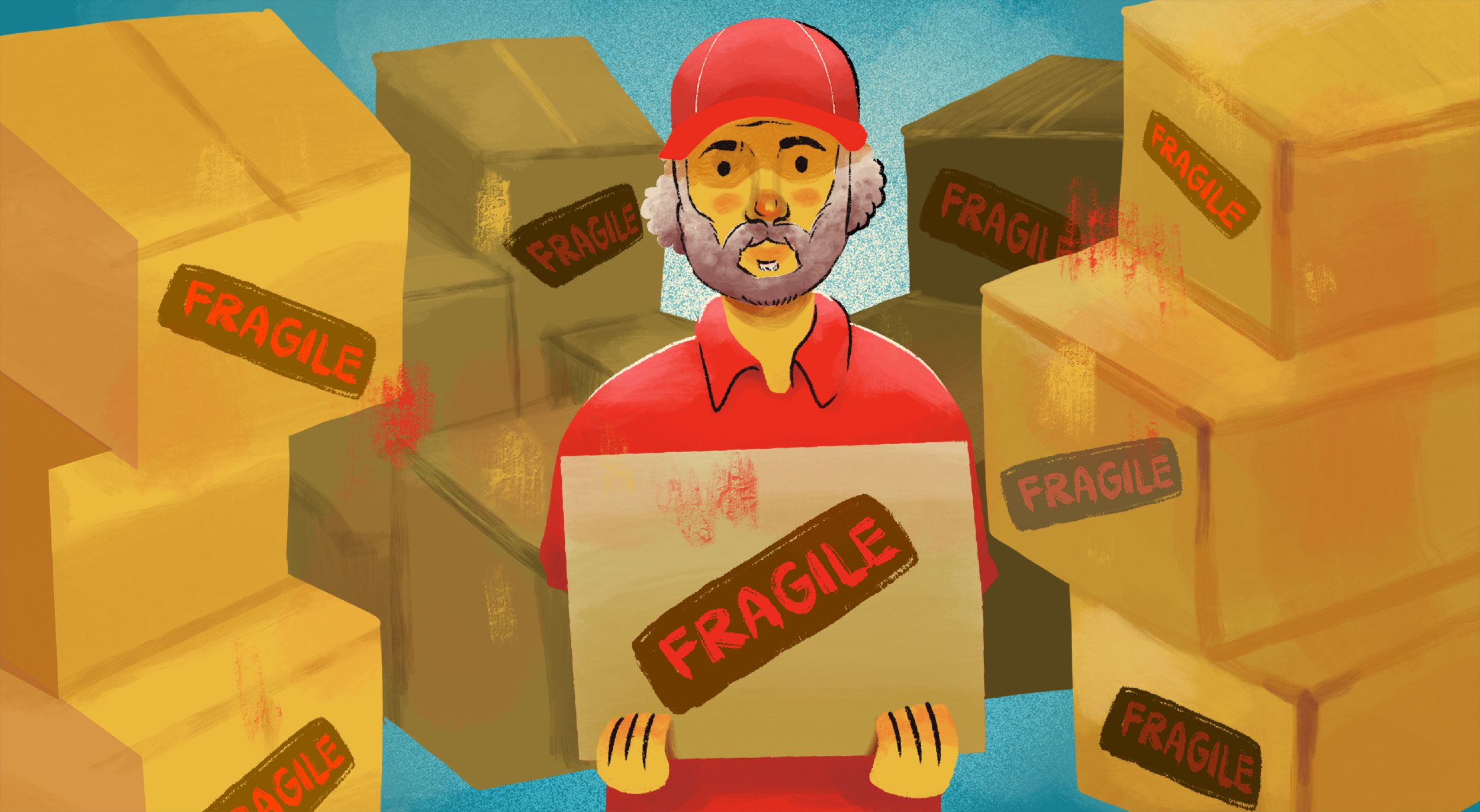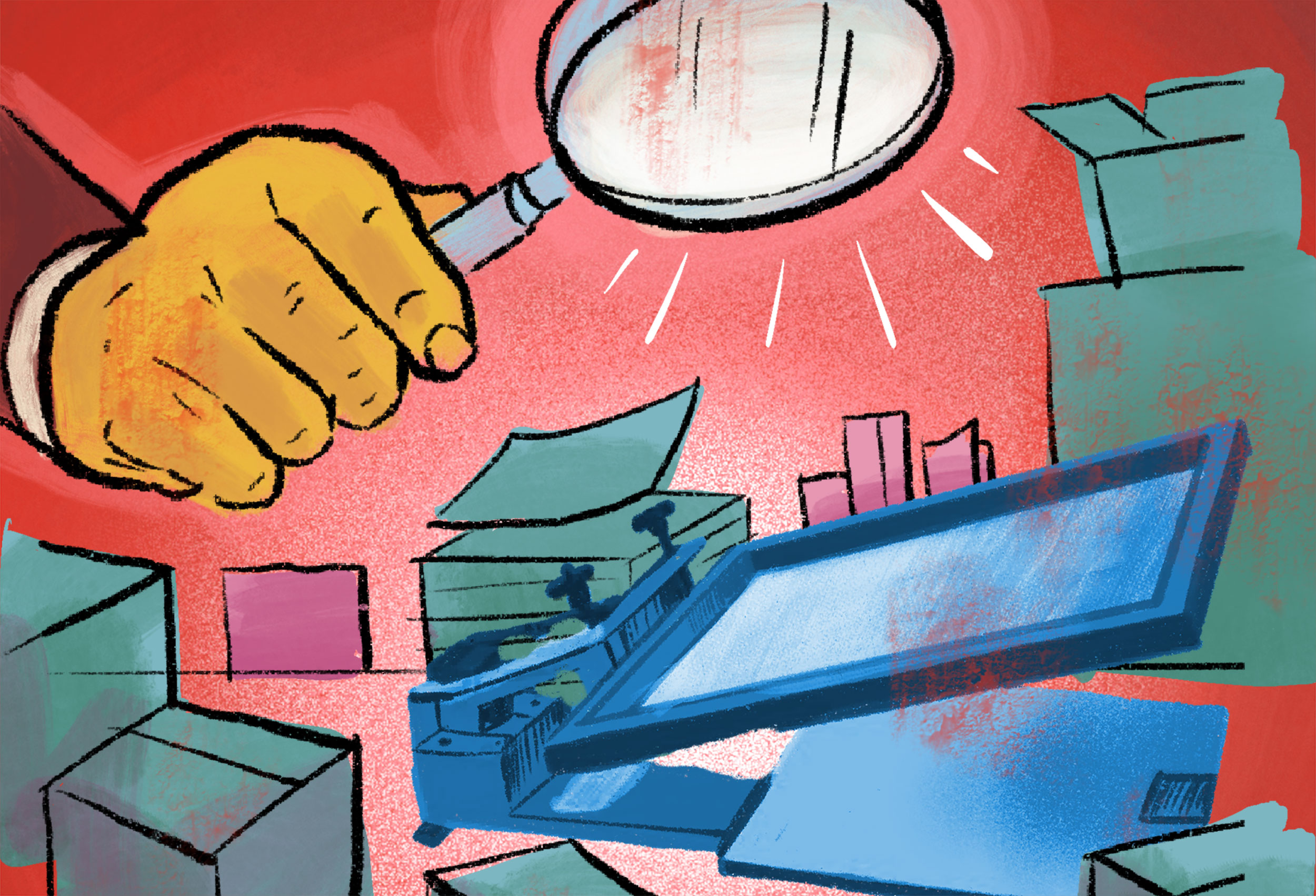
Published
3 years agoon
DOES THIS STORY sound familiar?
“Business is crazy right now. We have more work coming in than we can handle. Everything is in short supply. And prices are all over the place. Almost every week another supplier announces a price increase. This week we expected to receive a product we ordered three weeks ago. Today, the supplier informed us it will take another two weeks. Our customers aren’t happy waiting five weeks for a product that was previously delivered in a matter of days. I’ve been stocking up on blanks when possible, hoping that I guessed right on what is needed for future projects. But it puts pressure on our cash flow. Even when we get the materials, we can’t get the people needed to produce all the orders that are coming in.”
Screen printing business owners facing similar struggles wonder: Why is this happening? How can we ease the pressure?

WHY SUPPLY CHAINS FRACTURED
When mask mandates were first lifted, businesses eager to return to 2019 growth patterns ramped up faster than expected. The surge in demand affected every supply-chain link from the procurement of raw materials to the manufacturing and delivery of finished products. The challenges were complicated by pandemic-related disruptions in the availability of labor, delivery trucks, cargo ships, and manufactured products. Some supply chain issues won’t be fixed overnight. Screen printers may have to diplomatically reset customer expectations while researching and suggesting creative alternatives.
“Our supply-chain-management team has close relationships with suppliers and shipping partners to try to minimize shortages,” explains Jason Metnick, COO at S-One Holdings. (S-One’s global supply-chain network includes raw-material manufacturers, media coating and converting companies, and dozens of transit partners. S-One manages warehouses in Singapore, the Netherlands, Germany, the UK, Canada, and in five US locations.) “Before the COVID shutdowns, we stocked up and have ample supplies of materials our customers use most often.” Metnick believes many supply-chain issues are primarily related to problems with international shipping and ground transportation.
When ecommerce skyrocketed during the pandemic, so did the demand for package deliveries. But many truck drivers are aging out of the workforce and not enough younger drivers are being hired to replace them. Plus, ground shipments involving 400-plus miles take longer than in 2019 due to 2020 federal regulations that require all commercial trucks to use electronic logging devices. These devices enable safety agencies to enforce rules requiring long-haul drivers to take a 10-hour break after working a maximum of 11 hours a day. Drivers accustomed to taking a seven-hour break after a full day of work are fined for non-compliance. To cope with these changing conditions, FedEx and UPS suspended two-day guarantees.
Delays in shipments of products made in China and Europe can be attributed to the major consolidation of shipping companies that occurred in 2019. Demand for overseas shipments had fallen so much there was excess capacity, explains Metnick. “When shippers couldn’t make money, they started consolidating fleets.” Many ships were taken out of service.
Downsized maritime fleets didn’t matter so much during the COVID shutdowns when inkjet media manufacturers cut back on production. But transit troubles and labor shortages were noticed after businesses called furloughed employees back to work. Millions of employees chose to resign to either change careers, seek better jobs, start their own businesses, or go freelance. The extended unemployment benefits provided a financial cushion.
Some West Coast dock workers joined ecommerce fulfillment centers where they could earn more money and enjoy greater job security. This shortage of dock workers is creating delays and extra expenses for unloading shipments to the US. From an airplane over California, “I saw at least 200 container ships sitting in the Pacific Ocean off Long Beach,” said Metnick. “They were just waiting to come in port for unloading.”

WHAT YOU CAN DO
Today’s screen printing supply-chain issues may not be resolved until Q2 of 2022 if the demand exceeds the supply for school openings, the holidays, and the 2022 Chinese New Year.
For now, investigate what blanks are available from distributors closest to your place of business. Learn about alternative materials you could use for the print jobs your shop produces most often.
Give customers incentives to place orders further in advance of each job. For example, announce temporary higher rates for quick turnarounds.
Longer term, learn how to use an ERP system with your print MIS and workflow automation system. Accurate ERP data can help monitor current inventory levels, track price changes, and assess the delivery records of each supplier.
To minimize the impact of cost increases, screen printers with bigger facilities can stock up on popular types of materials before announced price hikes take effect. Smaller shops with limited storage space should over-communicate with suppliers, says Metnick. A well-informed vendor can act as a business partner and suggest cost-saving solutions.
In their “Trend Report: Supply Chain Resilience,” Deloitte analysts suggest rethinking how your business selects and evaluate suppliers. Training employees in supply-chain management practices can also help. Employees should learn how to gather and analyze the right data to make good supply-chain decisions, monitor and mitigate risks, communicate effectively with supply-chain partners, and develop contingency plans.

Freelance journalist Eileen Fritsch covers printing business and technology.
How have supply chain issues impacted your business?
- Cost more in time and shipping as each garment order comes from at least two distributors. Ink and screen mesh and other production supplies are becoming hard to get. — John Wilhelmsen, Distinct Impression, Tucson, Arizona
- It has been a challenge. The distributor stock levels are all over the place. I started out being kind to other decorators by lowering my back stock so all had access to what was available. That decision came back to hurt me as others were grabbing anything available without regard to others in the industry. I now have full back stock. I want to thank others who hoarded supplies for not caring about anyone but themselves. — Keith Abrams, The Decoration Facility, Indian Trail, North Carolina
- Raw materials have been slow for substrates, and replacement parts for machines and new equipment have long lead times. — Michael, McCall, Chattanooga Labeling Systems, Chattanooga, Tennessee
- Supply chains are impacting us with having to save screens or remake screens on back ordered items! It’s frustrating to tell your customers those items are BO but it’s worse when you have to save or redo screens for a few pieces. Finding substitutes is a band aid as most of the apparel that is BO or out of stock are incomparable to another product. Word to the wise: Stock up on your supplies! — Ron Augelli, WeTalkShirty.com, Dickson City, Pennsylvania
- Fake inflation/price gauging. I had a large order on “back order” for three months last year. Some garment manufacturers who won’t be mentioned spend way more time marketing than producing garments or keeping stock levels. And then hoarding… shops buying all the stock because they know there will be low levels at some point in the future. I haven’t been affected by ink shortages too much because I am WB/discharge only. — Eric Carnell, Independence Printage, Bellevue, Washington
- Prices has risen overall, but most of our supply chain issues are paper related. Our number one paper stock became allocated by the mill; we had to find a new white 100# cover stock. Paper availability is also diminished at other mills, and some previously fast and reliable mills are much slower. — Kyle Baker, Baker Prints, Chicago, Illinois
- Soooo many supply chain problems: holes in most common stock, it’s really hard to fill some large orders, deliveries have been spotty, and way too many back orders for my taste. (I hate back orders.) — Tracey Johnston-Aldworth, Traces Screen Printing, Waterloo, Ontario
- So many blanks we need for runs are out of stock. — Doug Heminger, SS Designs, Winter Haven, Florida
- I can’t get my screens restretched, and purchasing new screens is difficult at best. I have 72 screens waiting to be restretched that I dropped off June 2 and am now told there is no mesh available. — Bill Bischoff, Bischoff Design/Atomic Tees, Modesto, California
- It has affected everyone in every way. The biggest problem is not being able to complete orders because of missing pieces. — Mark Coudray, Coudray Growth Tech, San Luis Obispo, California
- To some degree it has helped people try other products, find new suppliers, and think through problems a little differently to solve challenges. It is still a disruption, but there is a silver lining to it, too. — Marshall Atkinson, Atkinson Consulting, Mesa, Arizona
- Negatively. I would kill for some white cotton tees right about now. — Joshua Rogers, Grunt Style, Carol Stream, Illinois
Eileen Fritsch is a Cincinnati-area-based freelance writer who served as assistant editor of Screen Printing magazine in 1994 before being named a founding editor of Big Picture magazine.

SPONSORED VIDEO
Let’s Talk About It
Creating a More Diverse and Inclusive Screen Printing Industry
LET’S TALK About It: Part 3 discusses how four screen printers have employed people with disabilities, why you should consider doing the same, the resources that are available, and more. Watch the live webinar, held August 16, moderated by Adrienne Palmer, editor-in-chief, Screen Printing magazine, with panelists Ali Banholzer, Amber Massey, Ryan Moor, and Jed Seifert. The multi-part series is hosted exclusively by ROQ.US and U.N.I.T.E Together. Let’s Talk About It: Part 1 focused on Black, female screen printers and can be watched here; Part 2 focused on the LGBTQ+ community and can be watched here.
You may like
Advertisement

Arcus Printers Barracuda Conveyor Flatbed Cutter

The Profit Impact of a Market Dominating Position

Inkcups Announces New CEO and Leadership Restructure
Advertisement
Subscribe

Bulletins
Get the most important news and business ideas from Screen Printing magazine's news bulletin.
Advertisement
Most Popular
-

 Case Studies2 months ago
Case Studies2 months agoHigh-Density Inks Help Specialty Printing Take Center Stage
-

 Art, Ad, or Alchemy2 months ago
Art, Ad, or Alchemy2 months agoF&I Printing Is Everywhere!
-

 Andy MacDougall2 months ago
Andy MacDougall2 months agoFunctional and Industrial Printing is EVERYWHERE!
-

 Columns3 weeks ago
Columns3 weeks ago8 Marketing Mistakes Not to Make When Promoting Your Screen Printing Services Online
-

 Editor's Note3 weeks ago
Editor's Note3 weeks agoLivin’ the High Life
-

 Marshall Atkinson3 weeks ago
Marshall Atkinson3 weeks agoHow to Create a Winning Culture in Your Screen-Printing Business
-

 Thomas Trimingham2 months ago
Thomas Trimingham2 months ago“Magic” Marketing for Screen Printing Shops
-

 News & Trends2 months ago
News & Trends2 months agoWhat Are ZALPHAS and How Can You Serve Them in Your Print Business?











